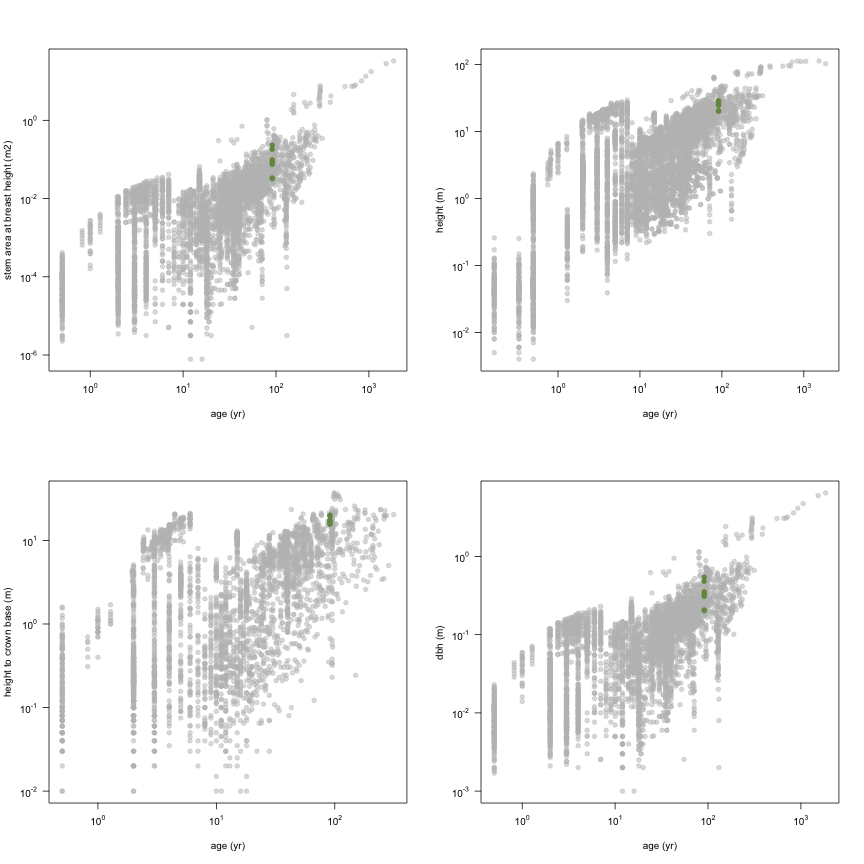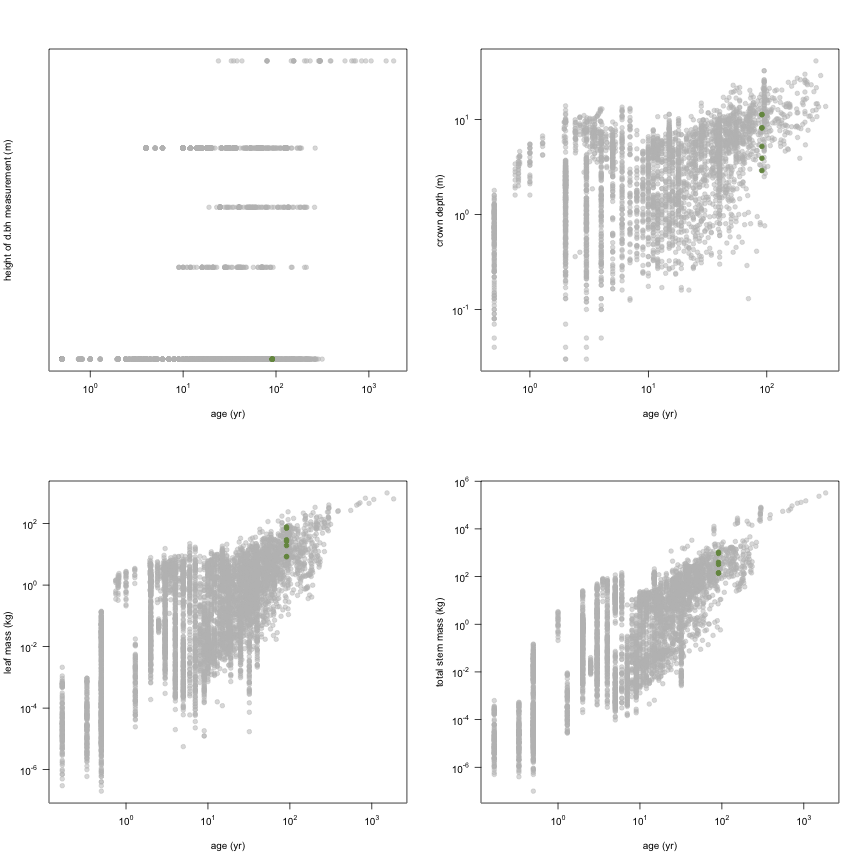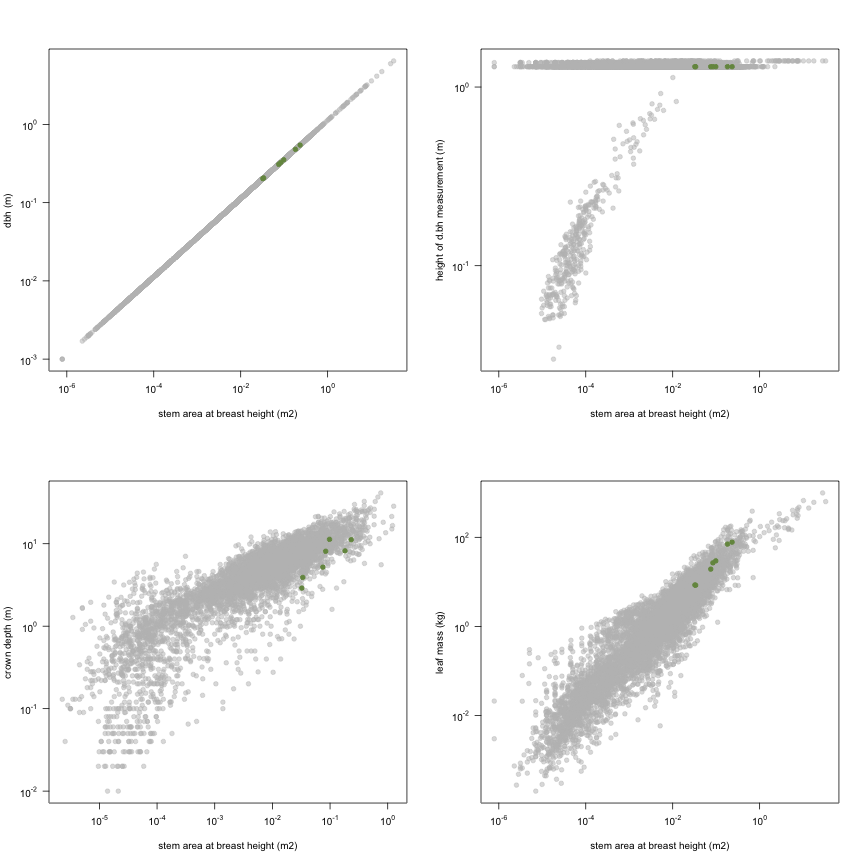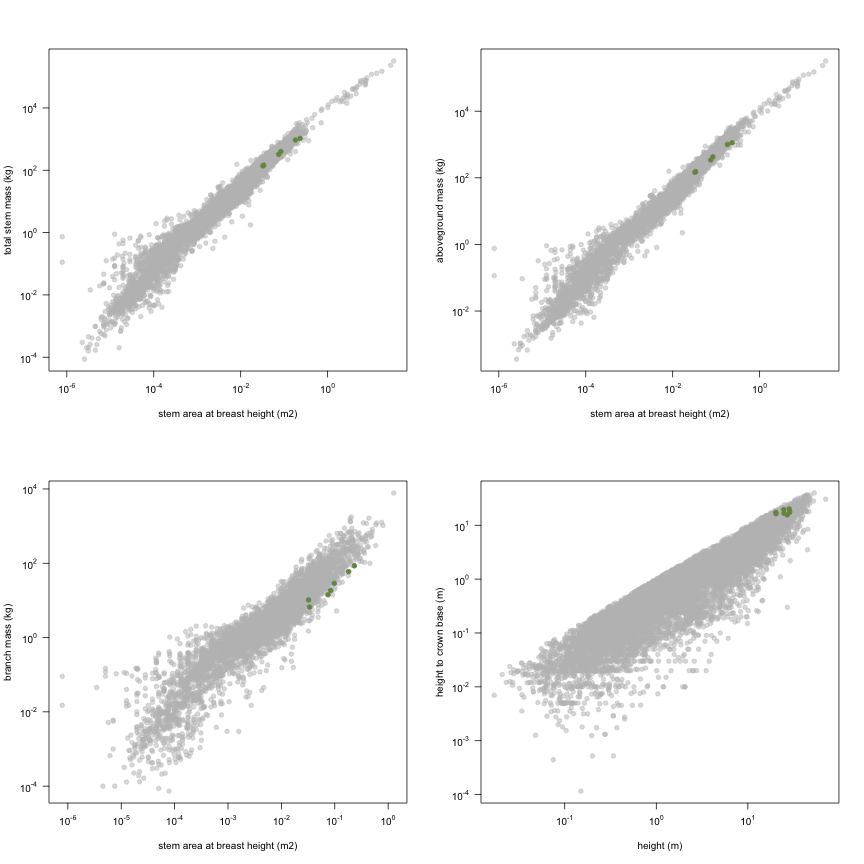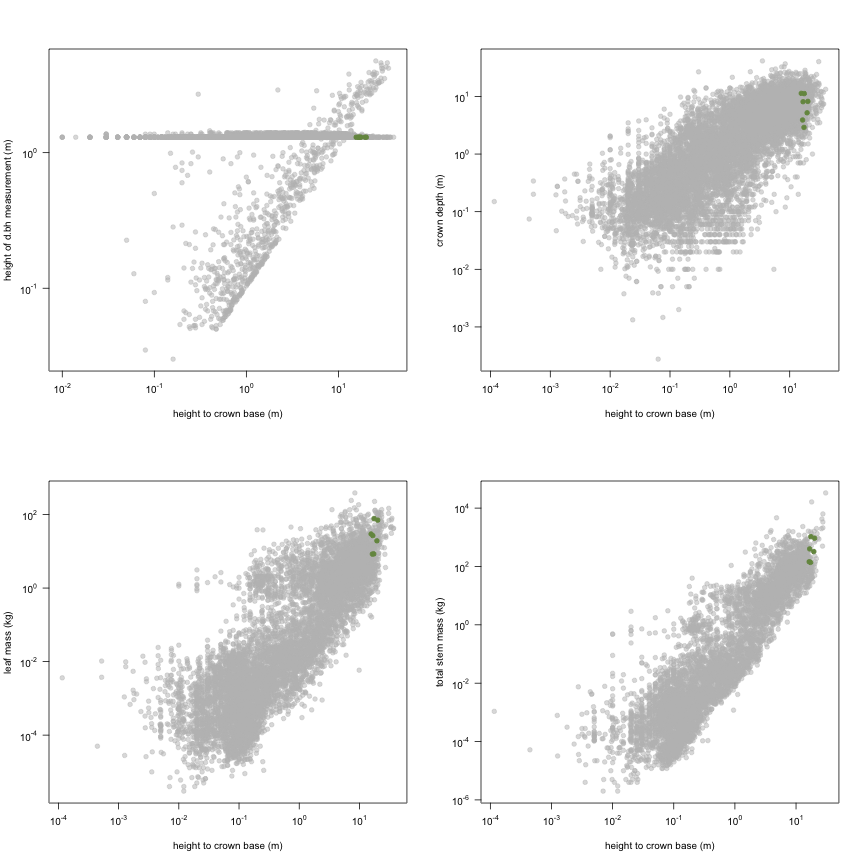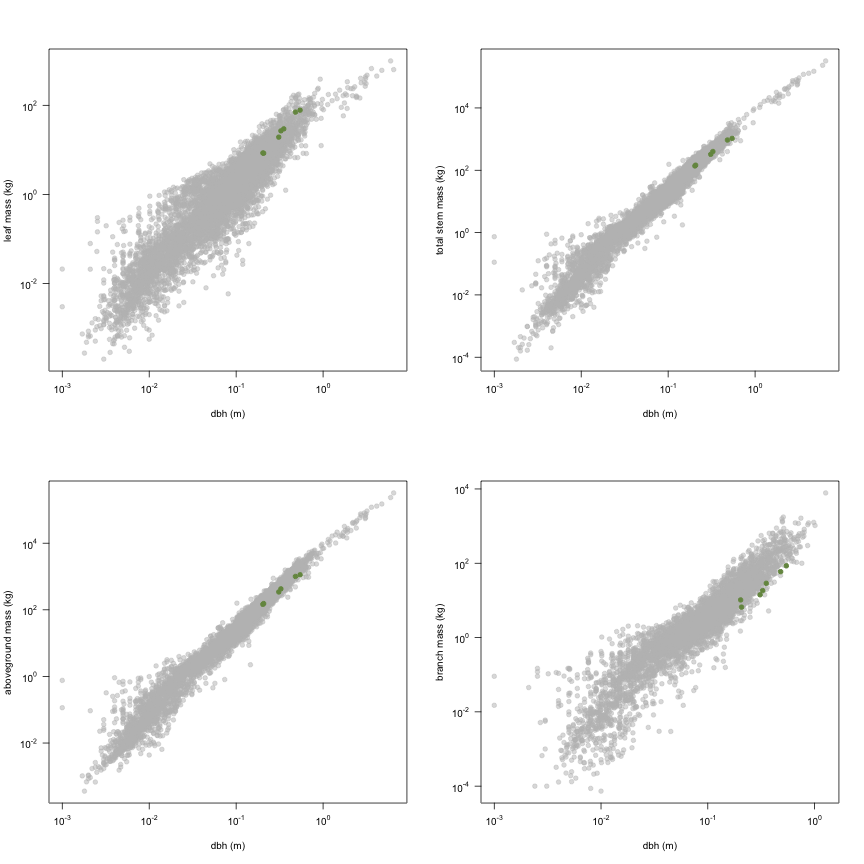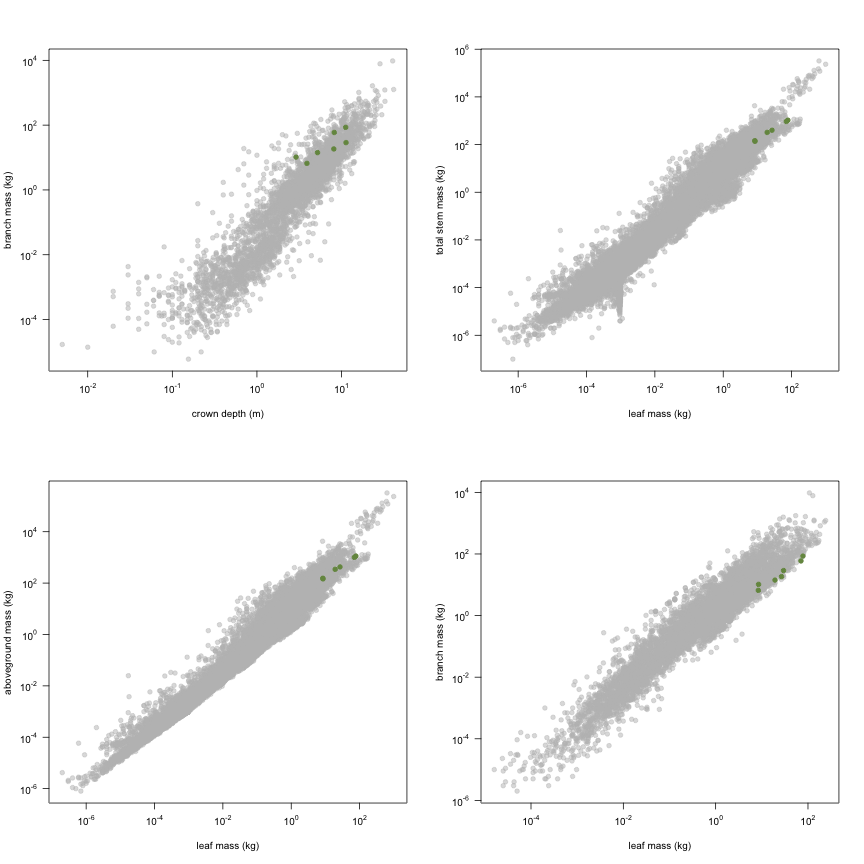-
Notifications
You must be signed in to change notification settings - Fork 19
Tange2010
Data contributor: Takeshi Tange
Email: [email protected]
Address:
- Graduate School of Agricultural and Life Sciences, The University of Tokyo, 1-1-1 Yayoi, Bunkyo-ku, Tokyo, 113-8657, Japan
Citation: Tange T and Kojima K (2010). 'Aboveground biomass data of Anno growth monitoring stands of Cryptomeria japonica in the University Forest in Chiba, The University of Tokyo.' Technical Report 49, Miscellaneous information, the Tokyo University Forests.
DOI:
Abstract:
The dataset includes records for 7 individuals from 1 species belonging to 1 family(ies), presenting 1 functional type(s), growing in 1 condition(s) within 1 major type(s) of habitat, with data included for the following variables:
| Variable | Label | Units | N | Min | Median | Max |
|---|---|---|---|---|---|---|
| latitude | Latitude | deg | 7 | 35 | 35 | 35 |
| longitude | Longitude | deg | 7 | 140 | 140 | 140 |
| age | Age | yr | 7 | 91 | 91 | 91 |
| a.stbh | Stem area at breast height | m2 | 7 | 0.032 | 0.084 | 0.23 |
| h.t | Height | m | 7 | 20 | 25 | 29 |
| h.c | Height to crown base | m | 7 | 16 | 17 | 20 |
| d.bh | Dbh | m | 7 | 0.2 | 0.33 | 0.54 |
| h.bh | Height of d.bh measurement | m | 7 | 1.3 | 1.3 | 1.3 |
| c.d | Crown depth | m | 7 | 2.9 | 8.1 | 11 |
| m.lf | Leaf mass | kg | 7 | 8.4 | 27 | 78 |
| m.st | Total stem mass | kg | 6 | 137 | 362 | 1052 |
| m.so | Aboveground mass | kg | 6 | 146 | 385 | 1129 |
| m.br | Branch mass | kg | 7 | 6.6 | 18 | 86 |
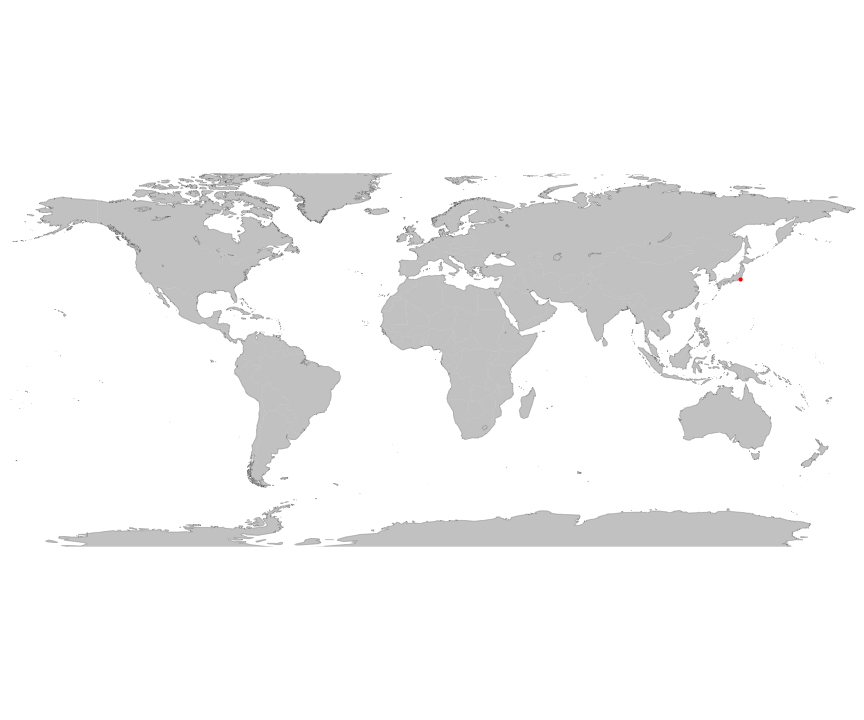
And locally within the country:
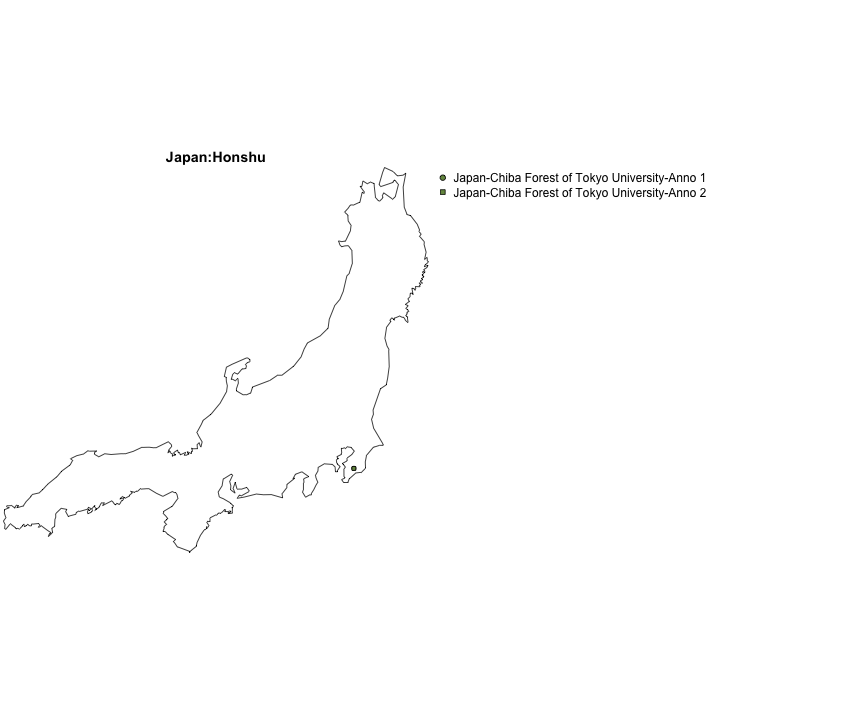
The sites sampled are:
| Location | Longitude | Latitude | Vegetation |
|---|---|---|---|
| Japan-Chiba Forest of Tokyo University-Anno 1 | 140.1 | 35.2 | Temperate forest |
| Japan-Chiba Forest of Tokyo University-Anno 2 | 140.1 | 35.2 | Temperate forest |
The growing conditions of sampled plants was:
| Location | growingCondition |
|---|---|
| Japan-Chiba Forest of Tokyo University-Anno 1 | plantation managed |
| Japan-Chiba Forest of Tokyo University-Anno 2 | plantation managed |
| Species | Family | Pft |
|---|---|---|
| Cryptomeria japonica | Taxodiaceae | evergreen gymnosperm |
Sampling strategy: Sampling was conducted in two 91-year old Cryptomeria japonica plantations (Anno1 and Anno2 in sub-compartment C5, compartment 2) located on almost flat fluvial terrace in the University Forests in Chiba, the University of Tokyo (Tange and Kojima 2010). No thinning was conducted in the past 40 years. Tree density was 1230 and 1120 trees per hector for Anno1 and Anno2, respectively. Mean stem diameter at breast height and mean tree height were 27 cm and 19 m for Anno1, and 31 cm and 23 m for Anno2. Three trees from Anno1 and four from Anno2 were selected including dominant, average, and suppressed trees. Sample trees were cut at ground level in April 1993. Sample trees were then treated with the stratified clip technique by cutting them into parts contained in horizontal layers of 0-0.3 m, 0.3-1.3 m, and at intervals of 2 m upward.
Stem cross sectional area: Estimated from stem diameter.
Height: Measured by measuring tape after the trees were felled.
Biomass: Fresh mass of leaves, branches, and stem were measured separately for each layer and tree (Tange and Kojima 2010). Green branches with diameter > 5 mm were categorized as branches and those =< 5 mm as leaves. Subsamples were collected for each component, each layer, and each tree and were oven-dried at 80 degree C. For stem subsample, a disk of 3-5 cm thickness was collected from the lower end of each stem segment. The dry-to-fresh mass ratios of these subsamples were used to calculate total dry mass of each tree component from fresh mass.
Other variables: Species name and family names were converted by M.I. Ishihara according to the following references: Satake Y, Hara H (1989a) Wild flower of Japan Woody plants I (in Japanese). Heibonsha, Tokyo; Satake Y, Hara H (1989b) Wild flower of Japan Woody plants II (in Japanese). Heibonsha, Tokyo.
This is how the study Tange2010 fits in the entire dataset (grey). each colour represents a species. A legend of species names with colours is included at the end for reports with 1 < n < 20 species.
